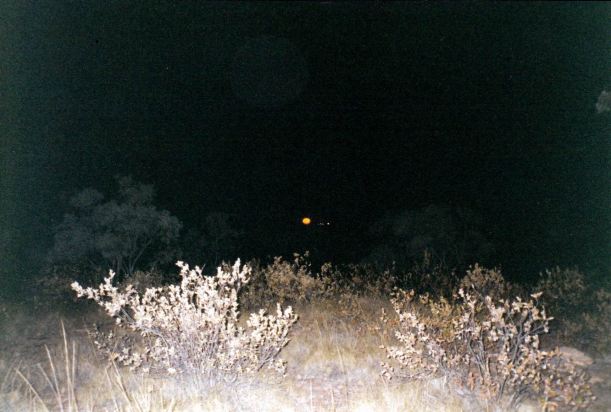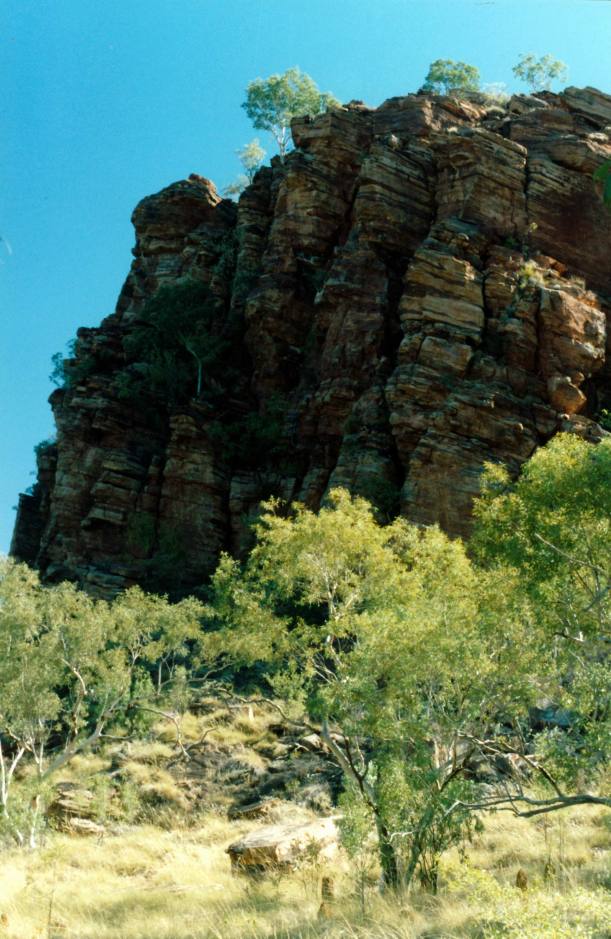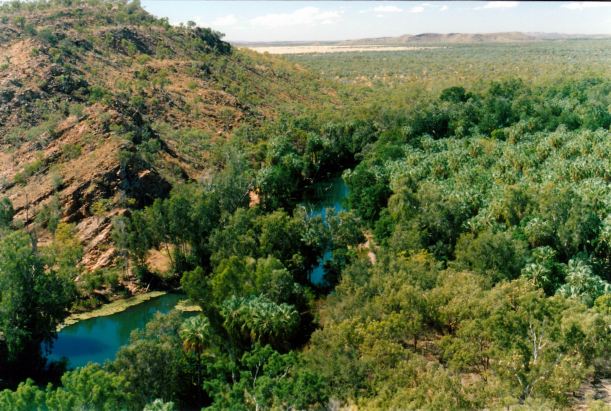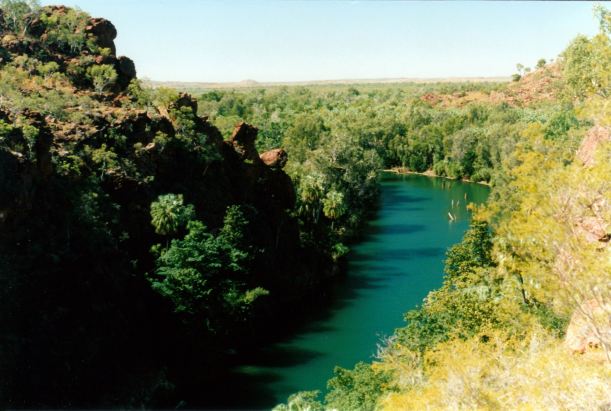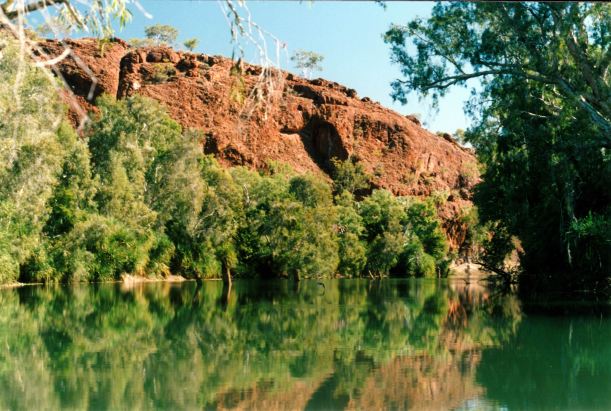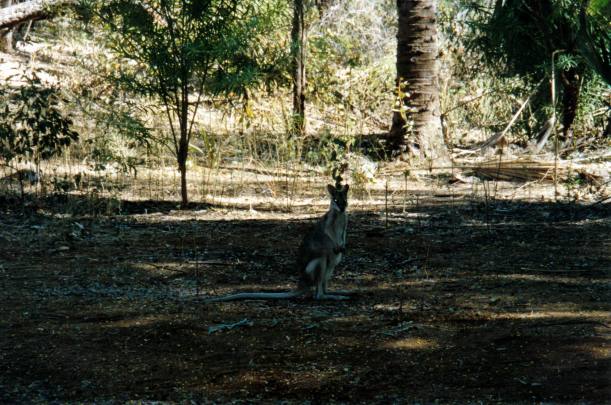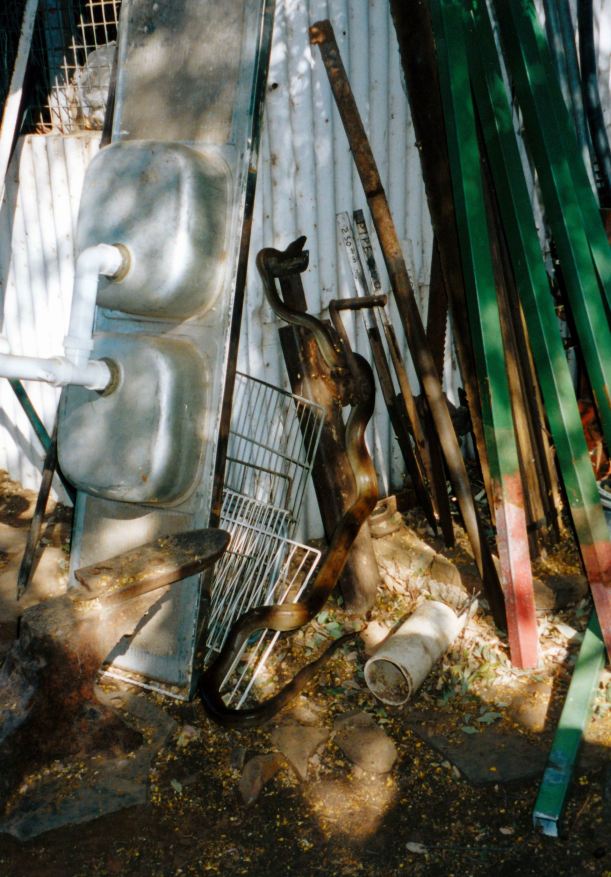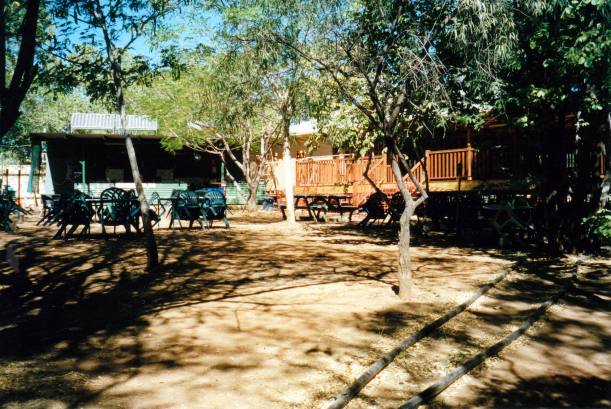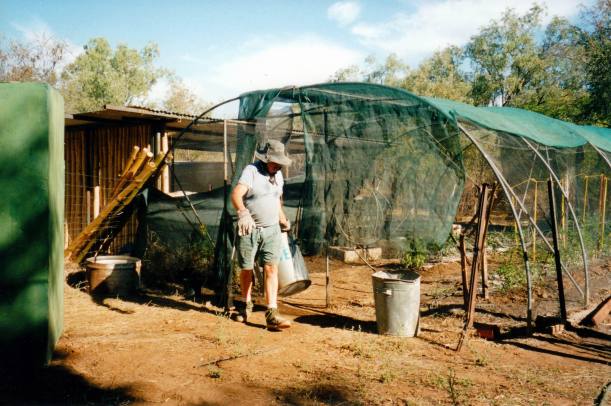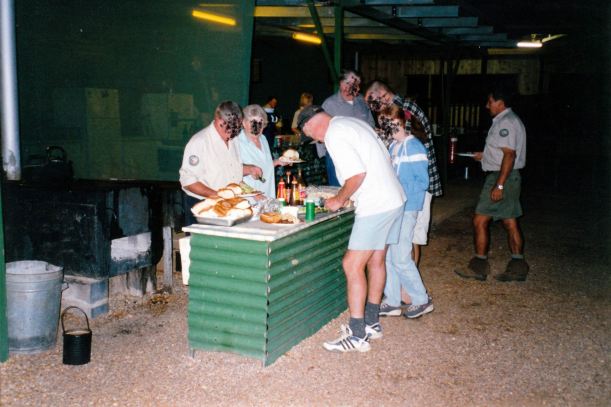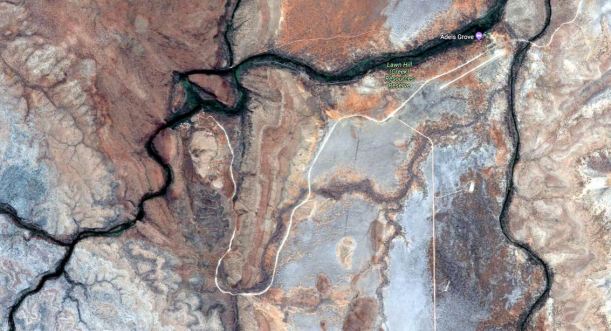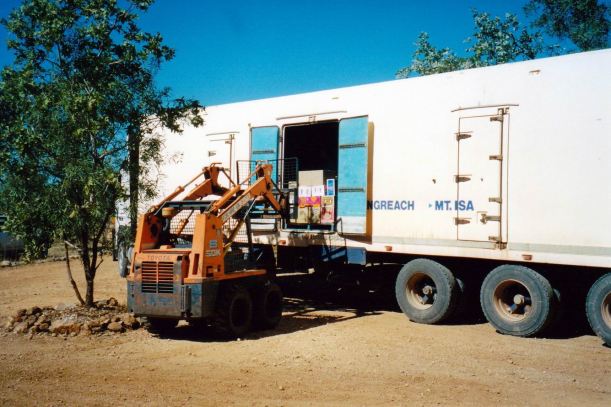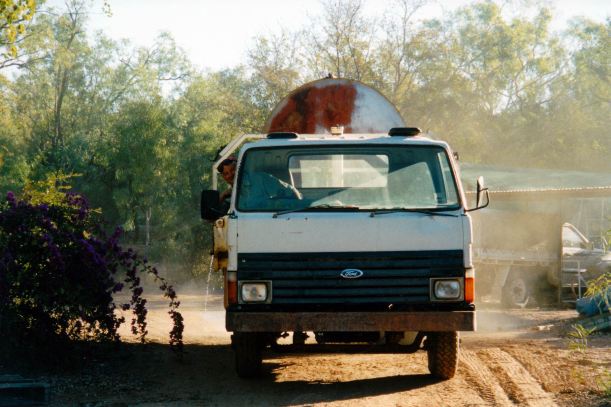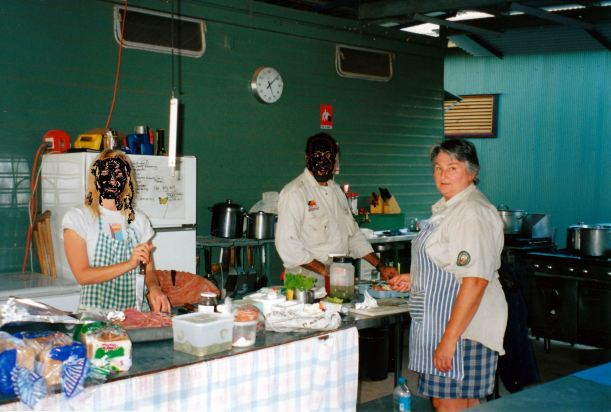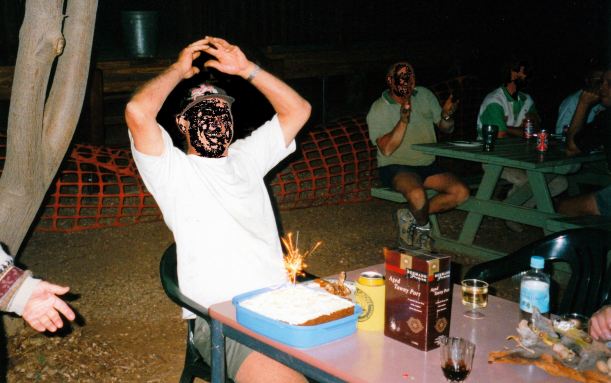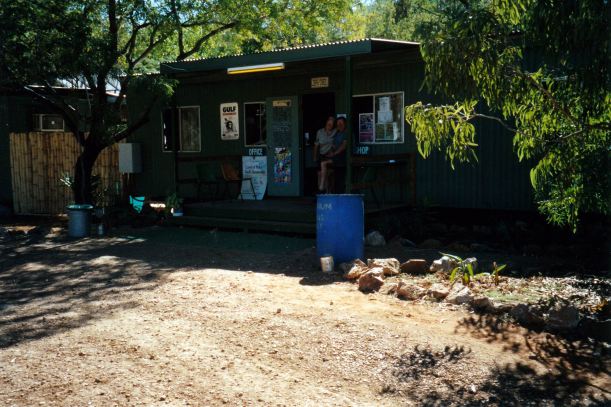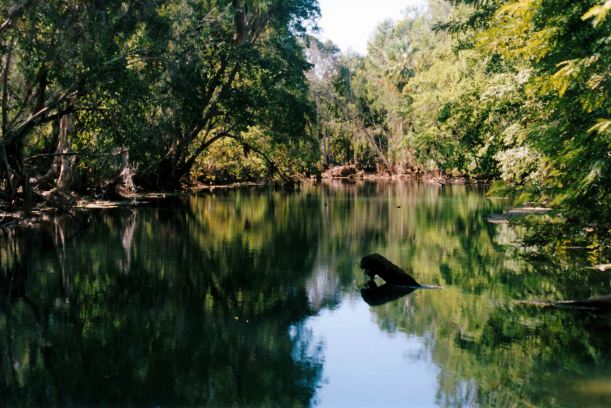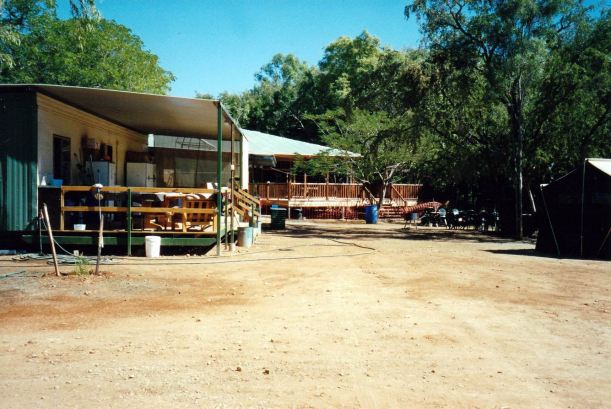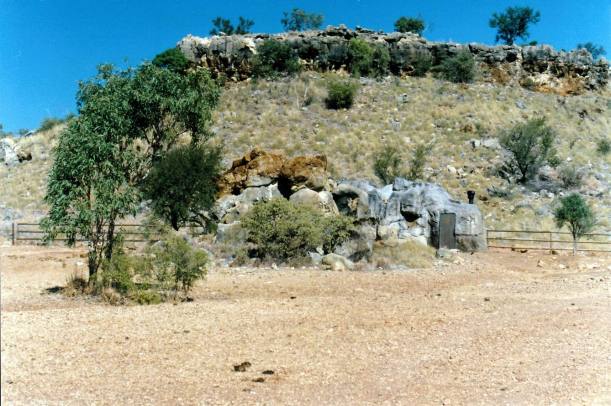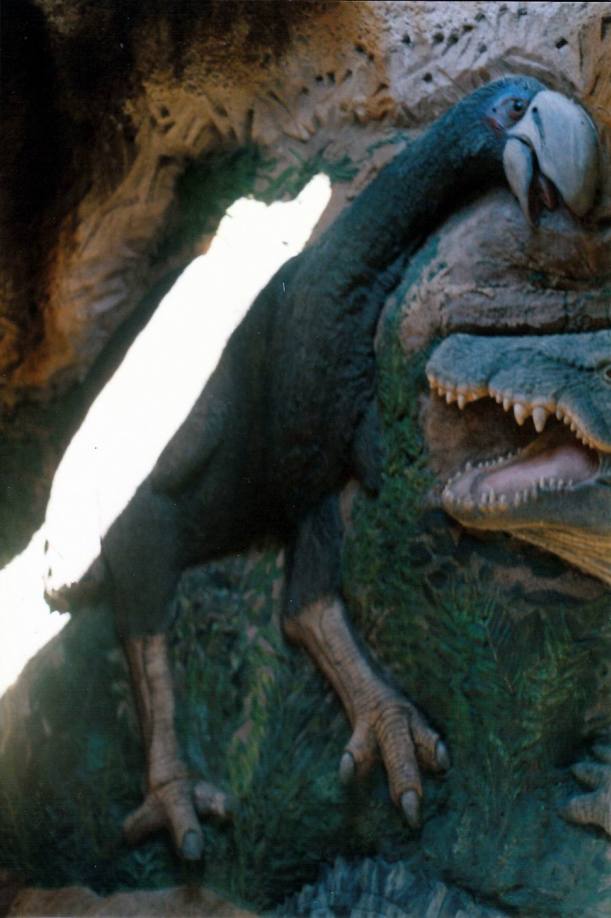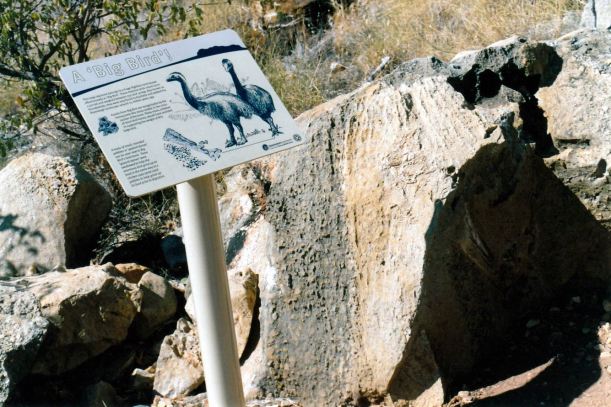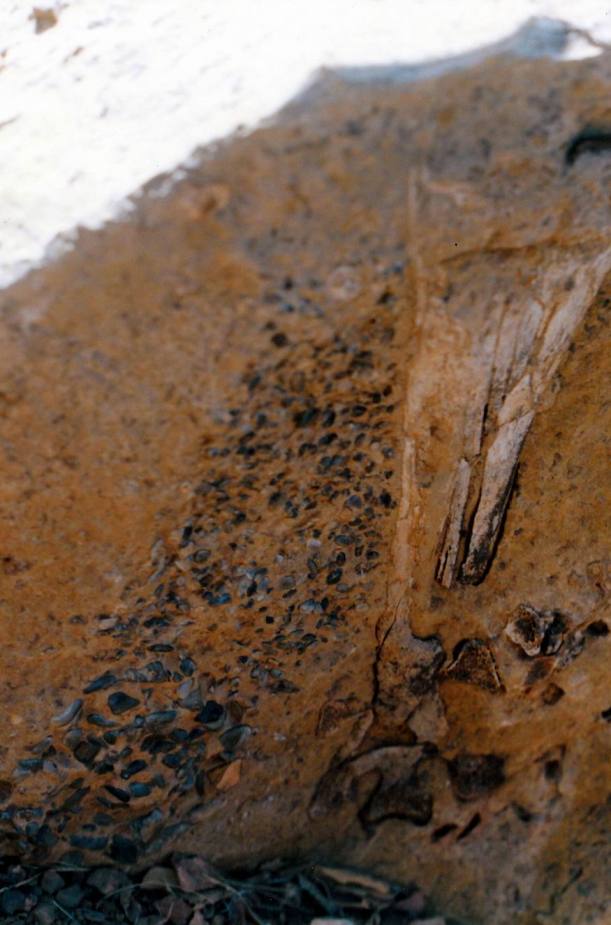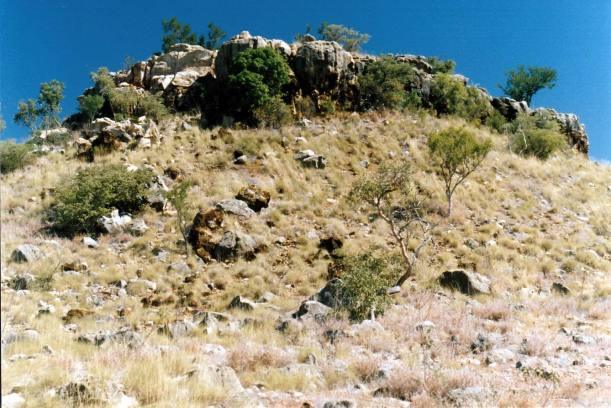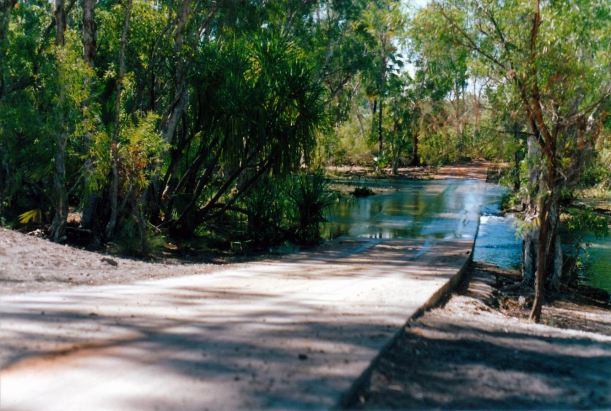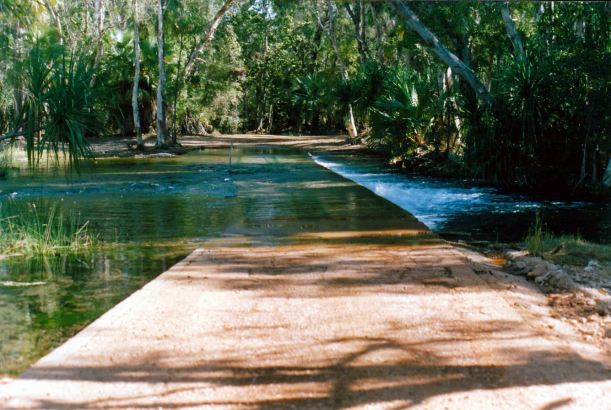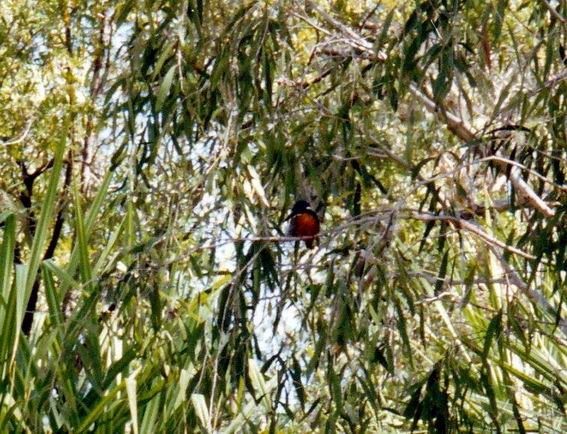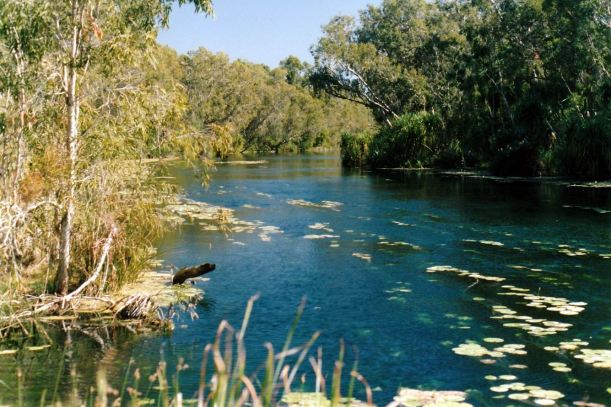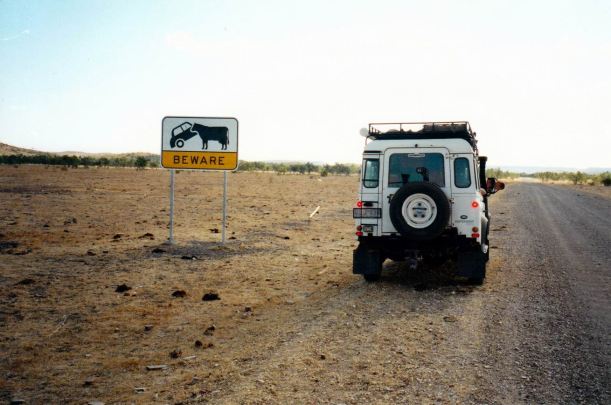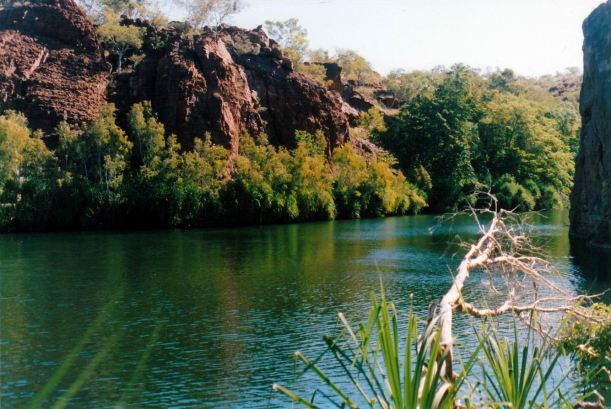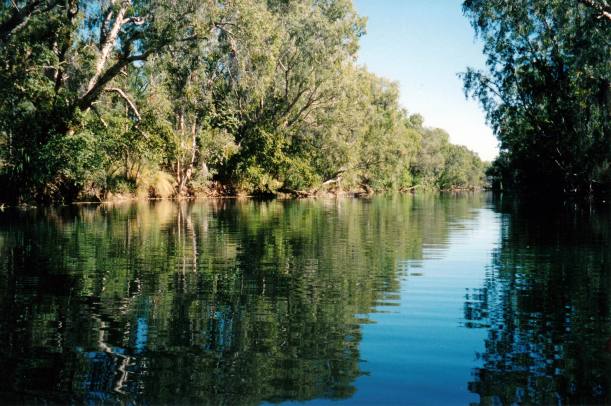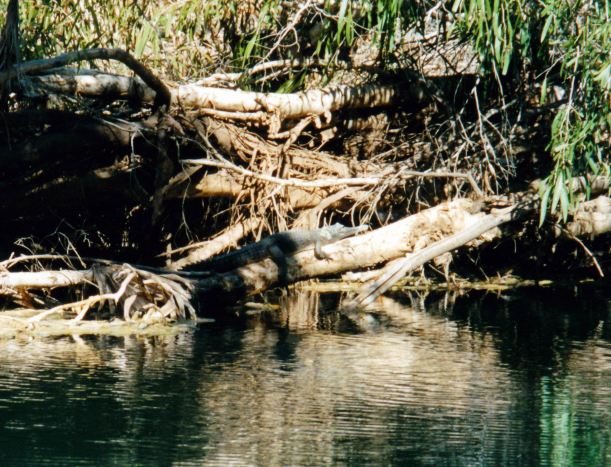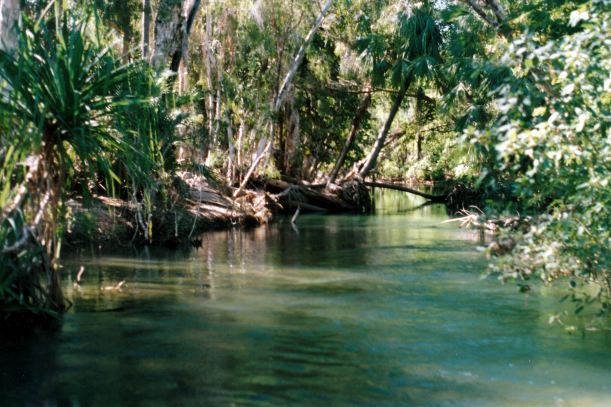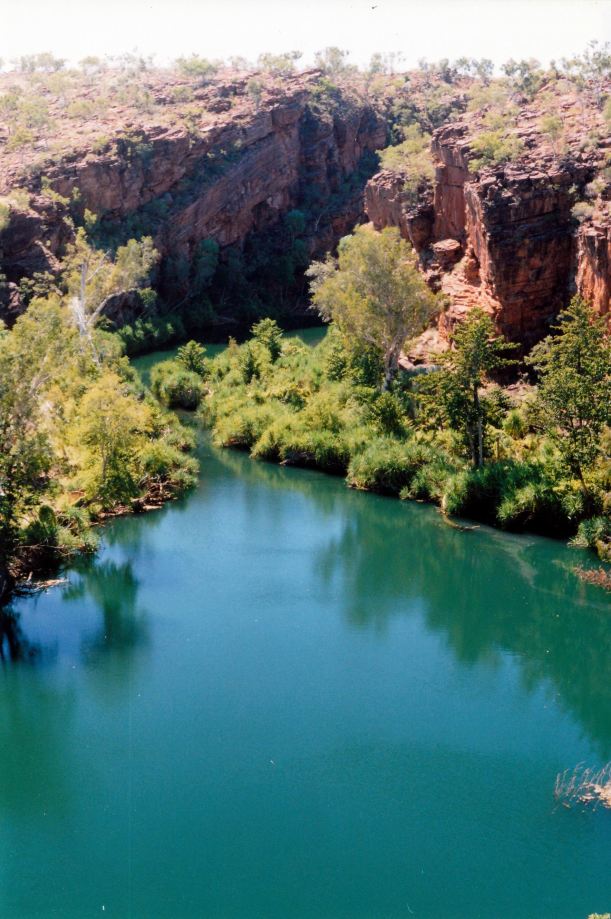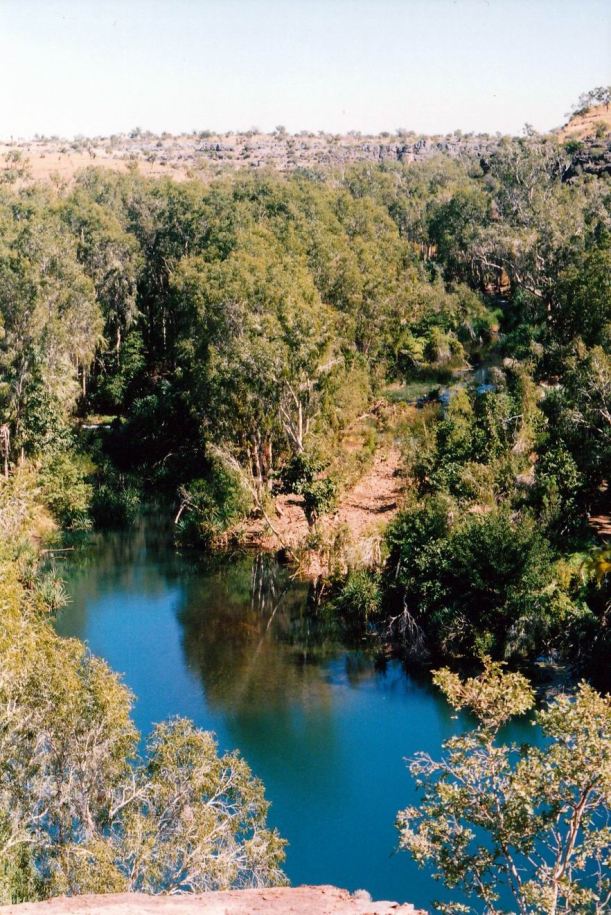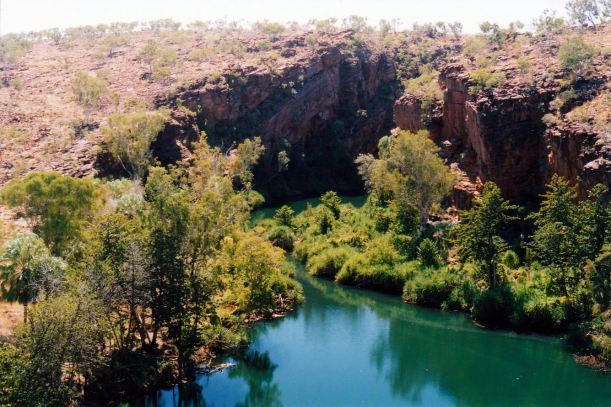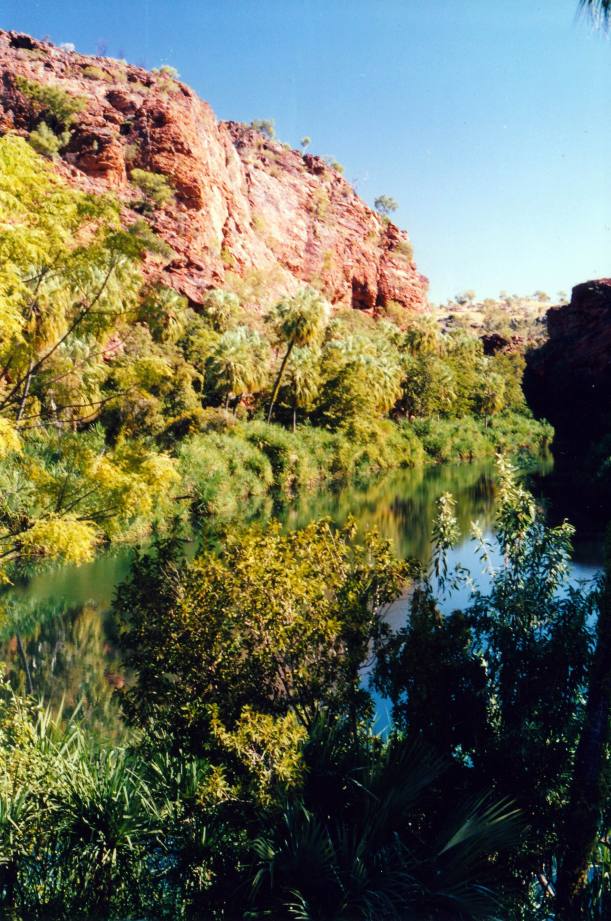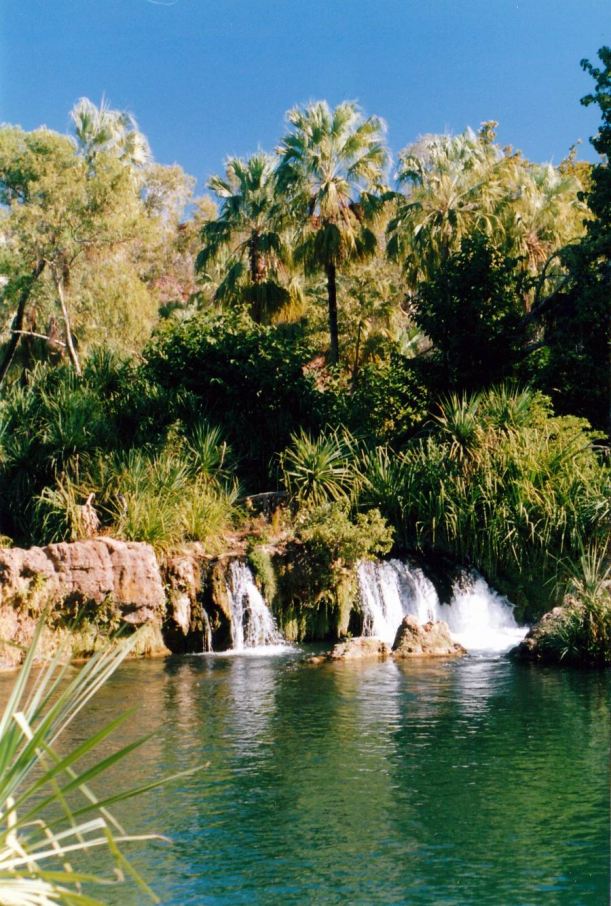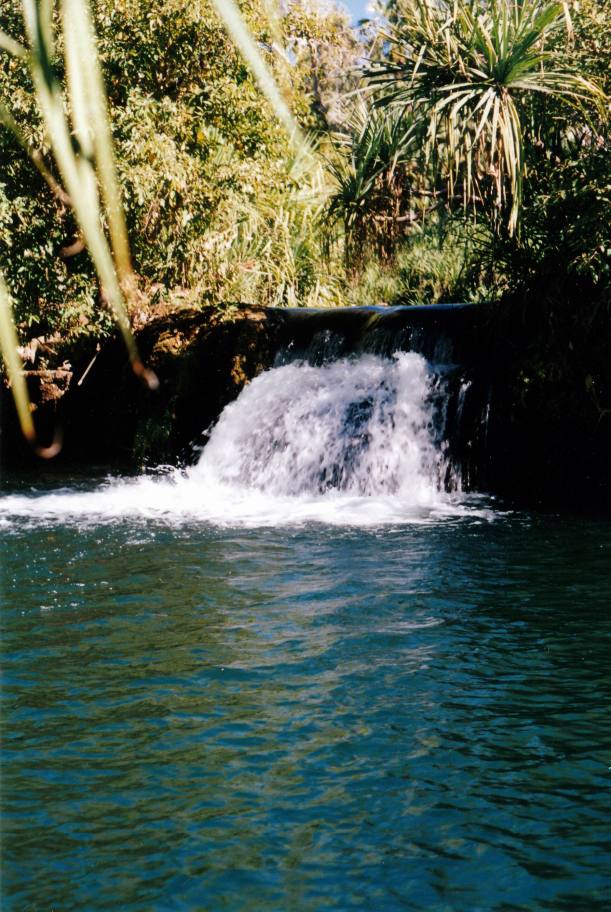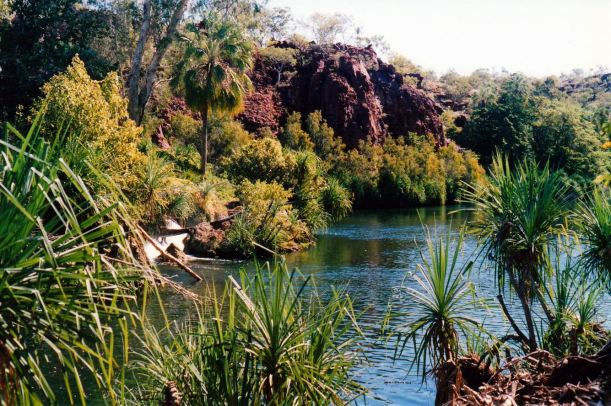Our fellow workers:
Including us, there were eleven resident staff when we began. Another couple had arrived by the time we left. There were also five builders living in. So that was sixteen staff to feed, for starters.
The man boss was an accredited member of the Savannah Guides Association – a group of local experts from across the northern Gulf country – formed to promote tourism. The previous owner of Adels helped form this group. Adels Grove was a Savannah Guide Station. The boss ran the half day tours to the Riversleigh fossil site, that Adels offered.
His wife ran the accommodation side of things and it was she who hired us.
There were three couples of similar ages to us, basically retirees too. They were here for the season. Previous experiences with backpacker workers had led the owners to prefer retirees – they said we had a better attitude to customer service.
One couple had a caravan parked down in the Grove, like us, the others were staying in the staff donga.
Two of the ladies looked after the reception and shop. One did the laundry for the DBB tents, and the housekeeping for same, helped when needed by one of the others. She only had a couple of domestic washing machines in the laundry; the innards of these had been ruined by the calcium in the water, so she had to manually fill the machines with a hose.
The men did the outside work. One of them ran the canoe hire service at the National Park, so he was away all day. His little work area overlooked the creek – a great place to work.
The final staff member was the cook – a lass in her 20’s, a friend of a family member of one of the owners, and a lovely person. She had not cooked before, but thought this sounded like a novel experience and a bit of an adventure in the outback. She was on a steep learning curve. Her existence was somewhat lonely, with no other staff of her age. My brief was to assist her, as the place got busier, and try to ease out some glitches that were appearing.
The protocol here was that, at the evening meal, guests were served first, and builders and staff after that. There were beginning to be rumblings that sometimes not enough food remained for staff, and I was to try to improve that.
Visiting “staff” came with the once or twice weekly company tours from Mt Isa. The regular guide was a local Waanyi aboriginal elder – highly educated, outgoing and a fascinating man.
Our work
The office ladies made sure there was always someone there to book in visitors, take phone bookings, do sales of any shop items, keep that area clean and tidy. They helped out with tent housekeeping if needed. When the weekly supply truck came in, they helped unload it and check the delivery.
The outside men did the cleaning, tank filling from the creek, and donkey firing already described. They fetched loads of firewood – mostly snappy gum – and chopped it. As well as pumping water from the creek, there was a water tanker truck that was filled and driven around to water the campground tracks when it was particularly dusty; as the season went on, this became pretty constant. It also was used to water the airstrip to reduce dust. There was some garden watering.
The campground – and other – rubbish was collected in the dump truck and taken to the tip pit, which was periodically burned. Then there was general tidying and upkeep of the camp ground, where vacated sites were checked and raked, and fire pits emptied.
Fly in tourists had to be collected from the airstrip and driven to the camp and National Park.
One of the men would serve fuel as tourists wanted it, from the bowsers. They would do basic mechanical repairs, if they could, repair/change flat tyres, fill travellers’ gas bottles. There were canoe repairs to do, too.
The men assisted with the dishwashing after the evening meal – their own dishes, and the pots and pans, serving dishes and the like. Given the limited power, there was no dishwasher.
By the time we joined the staff, the other men were in quite a routine for the basic jobs, so John had to carve out his own niche. He took on the neglected vegie patch and assumed responsibility for the outdoor dining area – hosing off the tables, tidying the area, helping us hose out the kitchen each morning. He was eventually entrusted with helping us cook BBQ’s and fish. He fetched the containers of special drinking water filled at Louie Creek – it had less calcium than our own creek water. As the new building progressed, he worked afternoons at painting that.
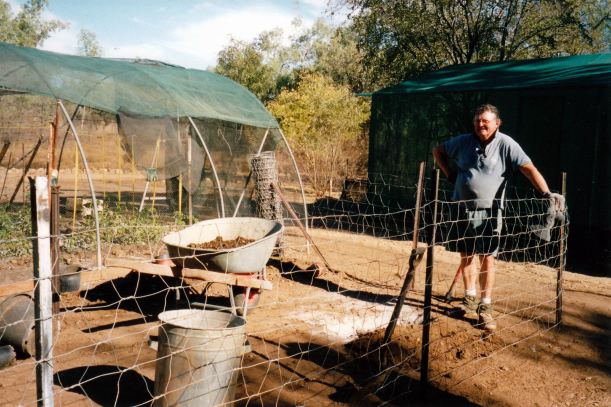
John at work in the vegie garden

The work in the kitchen:
The kitchen was open air – essentially a roof and a cement floor, attached to one side of a coolroom donga. For some reason, there were no flies here, so open air worked fine.

The kitchen
There were a couple of chest freezers and ordinary household fridges lined up along the back wall. Electrical power came from the generator, which was turned off about 10pm each night. In theory, a battery set up maintained power for the fridges and freezers, but this did not work well. However, they seemed to hold cool well enough through the nights. The only electrical appliance we could use was a small, hand-held electric beater; anything else required too much power. Hot water for drinks was heated in large kettles on the gas cookers.
Metal shelves were stainless steel or lino topped to form our work benches. Two single bowl sinks had cold water taps only – hot water for washing up was fetched in buckets from the nearest donkey water heater – a fair distance away. Bringing these was another task that often fell to John. One sink was towards the front of the kitchen area -this was to be used by guests and staff to wash up their own eating plates and utensils; we put heaps of teatowels out for them to dry same. So they did not need to come into the kitchen area itself. The other sink that we used for prep was against the donga wall.
There were two old industrial gas cookers lined up on one side of the kitchen space. Only one of the ovens worked, which limited what could be cooked for an evening meal – if it was roast meat and vegies, then dessert had to be something that did not need the oven. Not all of the stovetop gas burners worked, either, which sometimes necessitated some juggling of pots.
The stoves were supplemented by the big BBQ plate, on a wood fire, outside the kitchen, when we were having BBQ or fish.
The boss lady did the breakfasts each morning, served from 7.30am. These were buffet style for guests and staff to help themselves. There would be cereals, toast and something hot like baked beans. The builders would eat something light, then.
I started work at 9.30am, with my first task to make a substantial, cooked “smoko” for the builders, to be served at 10am. I often based this on leftovers from the previous night e.g. corned beef fritters.
Often there was a big cleanup to be done, from breakfast! In theory, everyone washed and dried up their own dishes and utensils. In practice, most of them just got left in and on the sink. Not a great way to start my working day.
B started at 10am. In theory, we worked a split shift, to allow for the fact that we often did not finish the clean up from the evening meal till 8pm – or later. In practice, it was often hard to take the time off in the afternoon, depending on what we were cooking, and how many for.
Boss set the menu for the evening meal. She grew up in the bush and the menu reflected this – and the origins of Adels’ dinner, bed and breakfast offering in the Riversleigh bush camp.
We would check the relevant meat for that night had been put out in the coolroom, the night before, to defrost, or else put it out in the morning. I made it my task to ensure there was enough put out to feed all – leftovers could always be used for the builders’ smoko.
The menu was a set two courses: main and dessert. Mains were roasts – mostly lamb or beef. The boss ordered whatever was on special from Woolworths in Mt Isa, each week, and that was frozen. Spag bol usually featured once each week. Whenever there was one of the two-night company tour groups in, corned silverside would be served one night (“salt beef” in the tour literature, which promised “Gulf cuisine”) and barramundi the other night – this came as a boxed and frozen import. Despite this, it was amazing how many guests told us we’d cooked “the best barra I’ve ever eaten!”

Cooking corned beef
We staff did not like the weeks in which company tours came twice!
BBQ was another regular – chops, sausages, meat patties. Sometimes there was curry (mild) with rice – which only boss man was allowed to cook, by his absorption method. It still stuck to the pot! Savoury mince, chicken in apricot nectar were other offerings.
We served potatoes – roasted, mashed or as “chippies” (cubed potato and kumara, oil sprayed and baked). Other vegetables were the standard frozen varieties. Cabbage went with the silverside. As time went on, I was allowed to make coleslaw, or a mixed salad as a change from the frozen vegies.
Desserts were in a similar vein: tinned fruit salad with custard we made from custard powder. Bread and butter custard was a regular to use up the large quantities of leftover crusts. Trifle. Frozen bought-in apple pies with ice cream. Creamed rice. Again, after some time, I persuaded the boss to order in the makings for fresh fruit salad, occasionally. We always had a supply of icecream in the freezers.
B and I would put out the makings for lunch and staff and the builders then helped themselves to those. There were the basic salad materials – lettuce, tomatoes, cucumber; cheese slices, tinned beetroot, pickled cucumbers, bread. Sometimes there were leftovers from breakfast, or the night before – often cold silverside! I considered lunches nicer than the evening meals, much of the time!
The company tour guide made up his lunches for his clients, to be taken off with them for the day. Mostly, he brought the makings for these from Mt Isa, where he had a couple of “aunties” who produced good cold picnic lunch foods.
As I got more into the routine of the place, I often tried to have some cake available – only basic, like carrot cake. There were always sweet biscuits for staff smoko. Sometimes I made a zucchini slice – for the builders’ smoko and for some staff lunch variety. I made carrot cakes for any staff who had birthdays.
Once the morning smokos were done, the breakfast and smoko cleanups done, the kitchen hosed out, we would have our smoko break – about 15 minutes. Then we would start prep for the evening meal. Potatoes would be peeled and put in buckets of water. Desserts prepared. Lunch makings put out. Then would come the lunch cleanup – mostly, the staff men were good at washing up their own plates and cutlery. B and I tried hard to take an hour for lunch.
If it was a silverside day, the large chunks of that would have been put on, in the morning, to slowly cook in drums on little open fire stands out in the dining area. John came to be responsible for lighting the fires under these, and keeping them stoked.
Roasts – big cuts – would go in the oven to cook. Then vegies for roasting – potatoes and pumpkin.
General cooking supplies were kept in the air conditioned coolroom donga, so we were constantly going up and down the couple of steps to it.
Most nights, we fed 40-60 people. The most was 78 and that was a corned beef night.
The evening meal was served at 6.30, so the later part of the afternoon was fairly solid work to ensure all was ready for that, and to clean up as much of our prep gear as we could.
The evening meal was served from the benches at the front of the kitchen. Guests would line up and receive a plate of food dished up for them, then take it off to the tables to eat. Dessert was served in the same way. Condiments, bread and so on, were on an accessible nearby side bench, by the BBQ stove.
After the evening meal was eaten, we would have a greater or lesser quantity of washing up to do, depending on how good that group of guests had been at washing their own. There usually ended up being a heap of cutlery in the sink for us to do! And always lots of pots and pans and serving dishes. We appreciated the way all staff pitched in and helped do that, usually being pretty tired by then.
While the washing up was happening, boss lady would put out the breakfast things.
Having the two of us working in the kitchen was a great set up because we really got on well. I thought that, before I came, it had been a lonely working day for young B, by herself in the kitchen.

